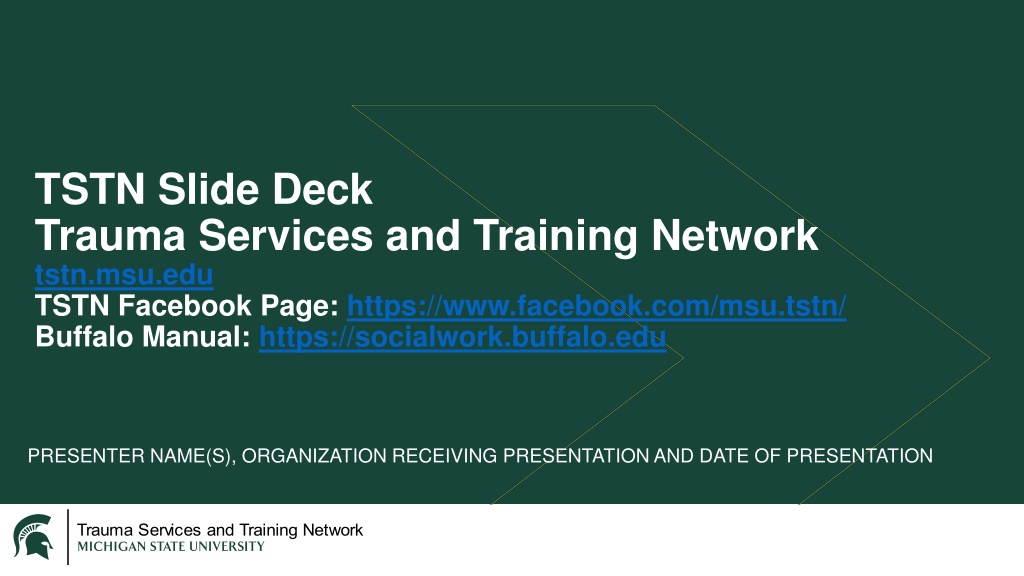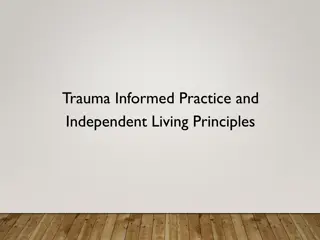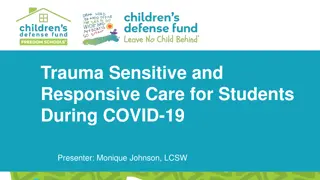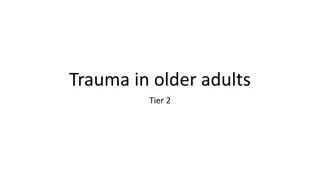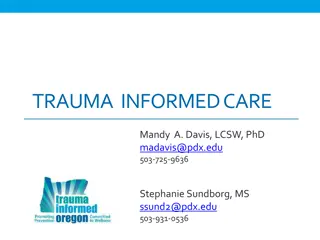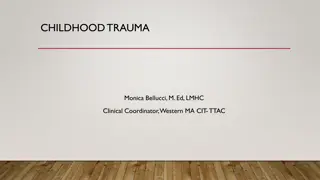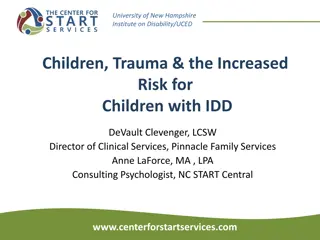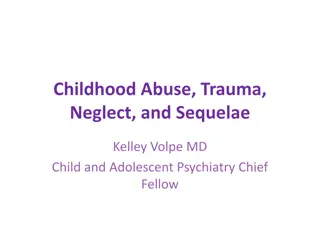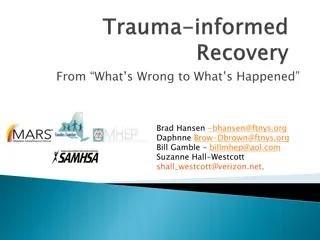Understanding Trauma: Definitions, Prevalence, and Impacts
This presentation explores trauma basics, including definitions, ACES, risk and protective factors, resiliency, PTSD, cultural awareness, stereotypes, stigma, and trauma-informed approaches. It also delves into the prevalence of trauma, highlighting statistics on traumatic event exposure among college students and children, as well as the link between trauma and mental health issues such as depression. The images and quotes provided offer insights into the profound impact of trauma on individuals.
Download Presentation

Please find below an Image/Link to download the presentation.
The content on the website is provided AS IS for your information and personal use only. It may not be sold, licensed, or shared on other websites without obtaining consent from the author. Download presentation by click this link. If you encounter any issues during the download, it is possible that the publisher has removed the file from their server.
E N D
Presentation Transcript
TSTN Slide Deck Trauma Services and Training Network tstn.msu.edu TSTN Facebook Page: https://www.facebook.com/msu.tstn/ Buffalo Manual: https://socialwork.buffalo.edu PRESENTER NAME(S), ORGANIZATION RECEIVING PRESENTATION AND DATE OF PRESENTATION
Trauma Basics DEFINITIONS ACES RISK FACTORS AND PROTECTIVE FACTORS RESILIENCY PTSD CULTURAL AWARENESS STEREOTYPES AND STIGMA PREVALENCE NEUROBIOLOGY OF TRAUMA TRAUMA INFORMED APPROACH
What is one word you use to describe trauma?
There was a child went forth every day, And the first object looked upon . And that object became part of him for the day or a certain part of the day, or for many years or stretching cycles of years. -Walt Whitman
Prevalence By the time they reach college, 66 to 85 percent of youth report lifetime traumatic event exposure, with many reporting multiple exposures (Read et al., 2011; Smyth et al., 2008) As many as 50 percent of college students are exposed to a PTE in just the first year of college (Galatzer-Levy et al., 2012) Female college students with a history of sexual trauma are at higher risk for repeated trauma (Griffin & Read, 2012)
Prevalence Trauma increases susceptibility to depression, and trauma symptoms are more likely to co-occur with depression symptoms (K lp l., 2003; O D ll, C , & P , 2004; Rytwinski et al ., 2013) 68% of children and adolescents had experienced a potentially traumatic event by age 16 (Copeland, Keeler, Angold, & Costello, 2007) .
Prevalence 26% of children in the United States will witness or experience a traumatic event before they turn four (National Center for Mental Health Promotion and Youth Violence Prevention, 2012) 1 in 6 children ages 2-8 had a diagnosed mental, behavioral, or developmental disorder. (Cree et al., 2016). The majority of youth in juvenile detention have been exposed to 6 or more traumatic incidents by the time they are detained; the average number of exposures for detained youth is 14 (Abram et al., 2004)
